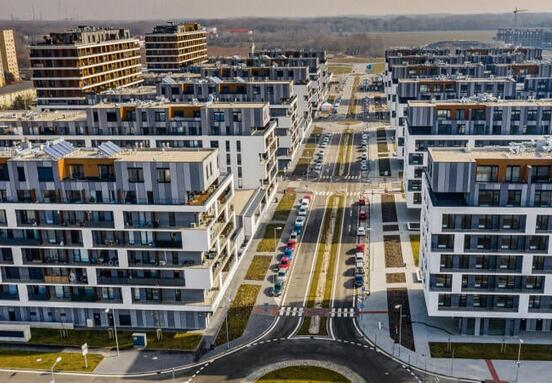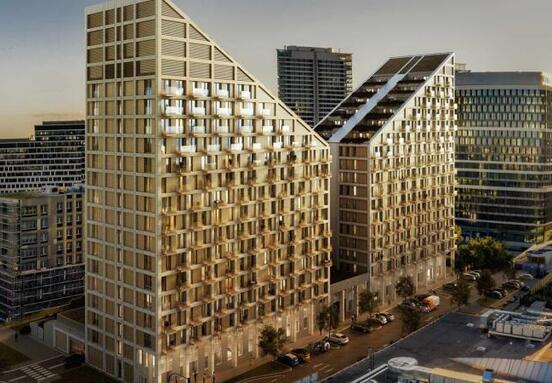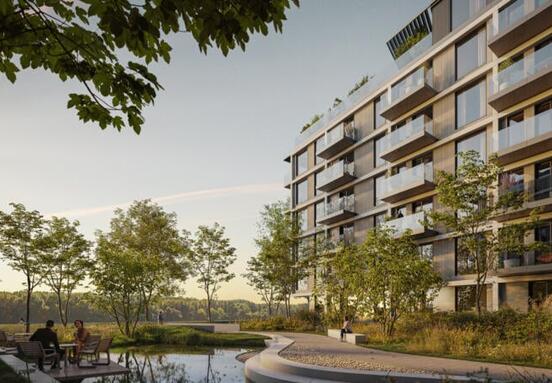The Rise of Flexible Offices: Adapting to Modern Work
The European real estate landscape is undergoing a profound transformation, with flexible office spaces leading the charge. In Bratislava, the area dedicated to flexible offices has already exceeded 40,000 m², representing approximately 2.3% of the modern office supply. While this share may seem modest, it signifies a strong upward trend, driven by companies seeking agility and responsiveness to changing market conditions.
Why Choose Flexible Office Space?
Businesses are increasingly opting for flexible solutions due to evolving work models and market uncertainties. A significant 64% of companies cite avoiding initial capital investments as a primary driver. Furthermore, 46% use flexible spaces to navigate market volatility, and 30% view them as temporary bases during transitional periods. These solutions offer rapid implementation, allowing businesses to set up new workstations in days rather than months, enhancing efficiency and liquidity.
Bratislava: A Competitive Hub for Flexible Offices
Despite a temporary dip in demand for Q1 2025, Bratislava remains an attractive and competitive market within Central Europe. Rental prices range from €150 to €420 per workstation per month, significantly lower than in major European capitals like Paris (€1,750) or London (€2,000+). The central administrative zone of Bratislava, offering excellent services, infrastructure, and transport links, accounts for a remarkable 74% of all flexible office leases. Professional services (28%), IT and financial services (15%), and healthcare (11%) are the dominant sectors leveraging these adaptable environments.
Key Considerations for Flexible Office Solutions
While the benefits are clear, businesses also face challenges. IT and security concerns are mentioned by 54% of respondents, alongside worries about employee perception. Companies are therefore seeking hybrid models that balance cost savings with robust data protection. Looking ahead, flexible spaces are projected to grow significantly, from 12% of company portfolios in 2024 to an expected 29% by 2027, reflecting the widespread adoption of hybrid work and the need for adaptable real estate solutions.
Slovakia's Resilient Retail Sector: The Power of Retail Parks
Slovakia's retail market demonstrates remarkable resilience and adaptability, even amidst cautious consumer spending. The focus has shifted from traditional shopping centers to regional retail parks, which are proving to be a less risky and highly attractive investment for developers and tenants alike.
Driving Regional Growth and Investment
New retail projects are primarily concentrated outside Bratislava, with approximately 80,000 m² of new space across fourteen projects currently under construction. These developments are enhancing regional offerings, particularly in Central and Western Slovakia, fostering local economies and employment. This strategic decentralization highlights a shift towards supporting local communities and providing accessible shopping experiences.
Stability and Strategy in Retail Leasing
Retail park rents remain stable, with prime rents at €16 per m² per month, offering a compelling alternative to shopping center rents of €70 per m² per month. The quicker construction times and lower operating costs of retail parks often lead to a return on investment in less than five years. Despite a slight decrease in visitation, tenant sales in Q3 grew by two percent, indicating a stabilization of consumer behavior. Furthermore, retail parks are better equipped to absorb inflationary pressures, making them a sustainable and attractive choice for new brands entering the Slovak market. The tenant mix is also evolving, incorporating services, leisure concepts, and even smaller coworking zones, supporting a new norm of integrated work, shopping, and relaxation.
Logistics and Warehousing: Flexibility Meets Efficiency
The logistics and warehousing sector in Slovakia mirrors the flexibility trend seen in offices and retail. Investors are increasingly seeking modular projects that can adapt to the evolving demands of tenants, from e-commerce fulfillment to reverse logistics, all while prioritizing sustainability and decarbonization.
Strategic Locations and Sustainable Solutions
Demand for modern warehouses remains strong, particularly in Western Slovakia's industrial zones around Trnava, Nitra, and Senec, which serve as strategic hubs for Central Europe. Tenants are seeking shorter contract terms, options for expansion or reduction of space, and access to sustainable energy solutions. This has spurred developers to create innovative concepts like hybrid industrial parks, which integrate storage, manufacturing, and administrative functions into cohesive units. Logistics yields continue to be robust, slightly surpassing those in the retail sector, affirming the segment's investment attractiveness.
A Unified Vision: Adaptability as the New Standard
Across the office, retail, and logistics sectors, a common theme emerges: adaptability, low risk, and efficient space utilization are paramount. The Slovak real estate market is progressively aligning with Western European standards, offering businesses dynamic and flexible solutions to meet their ever-changing needs. Whether you're seeking agile office space, resilient retail locations, or efficient warehousing, Slovakia's evolving market provides competitive advantages for forward-thinking enterprises.
Source: reality.trend.sk







